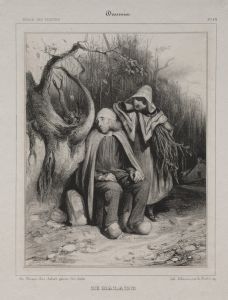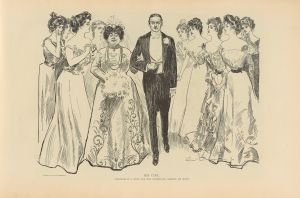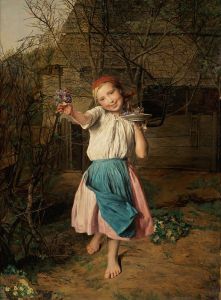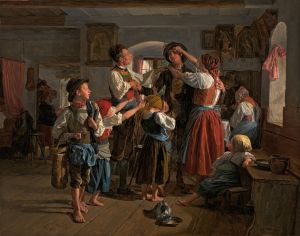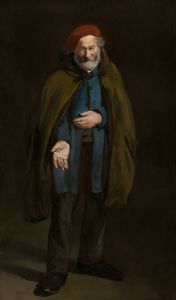
Das gutmütige Kind
A hand-painted replica of Ferdinand Georg Waldmüller’s masterpiece Das gutmütige Kind, meticulously crafted by professional artists to capture the true essence of the original. Each piece is created with museum-quality canvas and rare mineral pigments, carefully painted by experienced artists with delicate brushstrokes and rich, layered colors to perfectly recreate the texture of the original artwork. Unlike machine-printed reproductions, this hand-painted version brings the painting to life, infused with the artist’s emotions and skill in every stroke. Whether for personal collection or home decoration, it instantly elevates the artistic atmosphere of any space.
Ferdinand Georg Waldmüller (1793–1865) was an Austrian painter and one of the most prominent figures of the Biedermeier period. Known for his detailed and realistic depictions of everyday life, landscapes, and portraits, Waldmüller’s works often reflect the social and cultural values of his time. One of his notable paintings, Das gutmütige Kind (translated as The Good-Natured Child), exemplifies his skill in capturing human emotion and domestic scenes with remarkable precision.
Das gutmütige Kind was created in 1841 and is a genre painting that portrays a tender moment of familial interaction. The painting depicts a young girl offering a drink to an elderly man, who is seated and appears to be a traveler or a beggar. The scene is set outdoors, with a detailed background that includes lush greenery and a sense of rural tranquility. The composition emphasizes the innocence and kindness of the child, as well as the gratitude and humility of the elderly man. Waldmüller’s use of light and color enhances the emotional resonance of the scene, creating a warm and inviting atmosphere.
The painting reflects Waldmüller’s interest in moral themes and his ability to convey them through everyday scenarios. During the Biedermeier period, there was a strong emphasis on family values, modesty, and the virtues of kindness and charity. Das gutmütige Kind aligns with these ideals, presenting a simple yet powerful narrative that underscores the importance of compassion and human connection.
Waldmüller was also a pioneer in the study of natural light and its effects on color and form. In Das gutmütige Kind, his mastery of light is evident in the way sunlight filters through the trees and illuminates the figures, adding depth and realism to the scene. This attention to detail and his ability to capture the subtleties of nature were hallmarks of his artistic style.
Today, Das gutmütige Kind is considered a fine example of Waldmüller’s work and is often cited as a representation of the Biedermeier aesthetic. The painting is housed in the Belvedere Museum in Vienna, Austria, which holds a significant collection of Waldmüller’s works. It continues to be appreciated for its technical excellence and its poignant depiction of human kindness.






